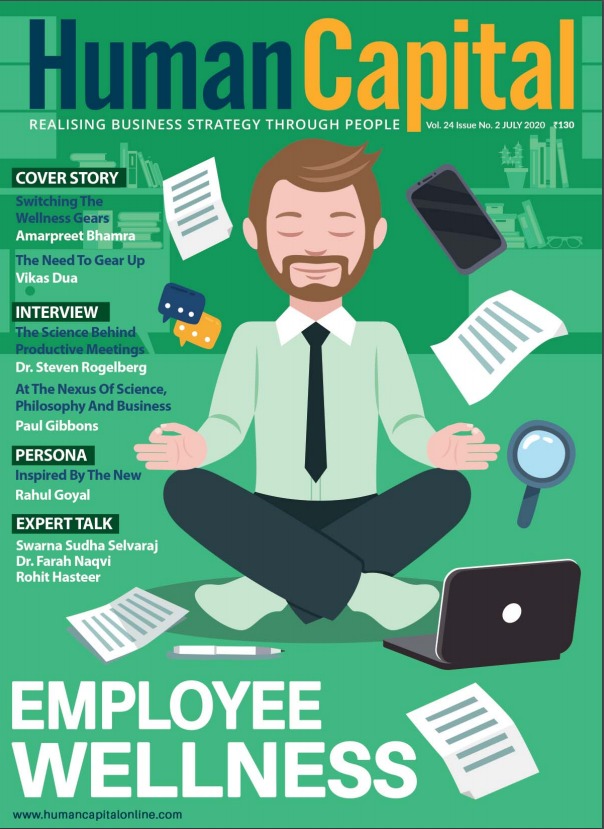With businesses gradually returning to normalcy as the world emerges out of the pandemic, the definition of the employee value proposition (EVP) is also changing. “Here is what we want to give you in return to what you give us” is what EVP has been defined as, traditionally.
Let us take a walk down the EVP lane to see how the metamorphosis has been happening.
An article1 in 2018 by Dan Fries, member of Forbes Human Resource Council elaborates how 2019 is waiting for a more flexible EVP. He talks about a client for whom he had advised that an EVP that was created a decade ago could still be kept relevant. He clarifies that over the years the EVP was periodically tweaked to meet its requirements of attraction and retention of talent.
Fries highlights a few important caveats. He questions them around how the tweaks were made, whether based on data or by engaging the workforce to test the changes. He challenges organisations as to whether they have enough information to review the EVP as it is critical to align with the needs of the business and its people.
If one was to look at the concept of EVP in the light of what Fries is talking about, it is important to understand the context a little more. What is an EVP all about? How does one design an EVP and also make it evolve to be meaningful to the business? Mercer’s ‘Thrive Research’2 gives this simple pyramid of the evolution of business and alignment of the EVP with it. The core message in this research is “Putting people at the heart of change”.

The EVP continuum progresses from the contractual to experiential to the emotional stage as the business progresses from being competitive to differentiated to unique in its offerings.
When the business is at the competitive stage, attraction and retention of the right talent is the need of the organisation and EVP caters to the parameters of paying competitively and also providing employees with the right kind of benefits. At this stage what matters to attract candidates is “Are you paying right?” The EVP here is simple and represents the compensation and benefits deal for the work performed.
Finding the Right Formula
As the business grows, it starts looking at how differentiated it is from its competition. At this stage, the formula of right remuneration will not be enough to keep its attrition low.
Here is when the EVP gets tweaked to add aspects of ‘employee experience’ by including items of wellness and well-being. While wellness includes health and benefit programs, well-being also directs towards career progression. An employee would want to stay with an organisation that shares its vision and helps create a career roadmap for its people. A competitive business, with well-differentiated offerings that have been through the growth pangs, reaches a stage of being unique.
That is precisely when ‘purpose’ emerges as a key ingredient for the EVP. Purpose is driven by connecting the dots of the employee lifecycle to the vision and mission of the organisation. Alignment of purpose is what an employer would expect while finding a purpose for self is what an employee would expect. An intersection of these purposes is the appropriate design of the EVP.
A well-designed EVP is something that represents everything of value that an employer provides to its employee including remuneration, career path, wellness, and above all, purposeful existence.
Traditional EVP design starts with assuming that the organisation knows exactly what to offer to the employee and each employee knows what to deliver to the organisation. Since a real value-added EVP is all about being people-centric, how about applying some design thinking (DT) here? This is all about flipping the whole thing over, completely!
DT encourages starting with asking questions like “Can you tell me more?” and not with statements like “I know it all”. Instead of saying “This is why we are a great company”, DT asks the employees, “What makes you happily stay with us?” It is quite evident here that insights are sought and instructions are not given. Empathy is the main ingredient of DT and for that, it is important to be comfortable with being vulnerable. Teams that are designing the EVP are required to be ready for honest and candid answers while doing empathy map conversations.
I am reminded of an organisation that was transitioning from being a family-owned small business to a more professionally-managed acquired entity of a large multi-national; a valid situation for redesigning the EVP. Talent retention strategies had to be re-chartered. The best way to go about was asking the employees, “Why do you like working with us?” Several such conversations helped in identifying that the most valuable parameters for this organisation were familial bonds, flexibility in working, simple implementable practices, and regular rewards and recognition. And that was how the redesigned EVP helped in creating an employer brand.
Yet another organisation had a peculiar story. While all procedures and practices were well in place, there was still increasing dissatisfaction, leading to attrition. On probing deeper, the design thinking team realised that the employees valued autonomy and were dissatisfied with micromanagement. In such a situation, an effective EVP would be one that allows employees freedom of decision making without any fear of consequences and that ‘creative solutions’ are recognised and rewarded.
With organisations having to adapt to remote working during the pandemic, psychological safety has become an important aspect of EVP. The three concepts at the core of psychologically-safe work culture are:
a. Democracy over bureaucracy
b. Common sense over rigid rules
c. Alignment of purpose
With these forming the foundation of the new EVP, psychologically safe workplaces can be built and sustained3.
As psychological safety directly impacts performance, the following components may be considered while designing the EVP for the new normal.
Vulnerability at Leadership
In order to enable employees to see value for themselves, leaders would be required to go through a transformational journey themselves. This is to equip them with learning to communicate with trust and transparency and with a belief that everyone is an adult and adds value to the business. This lays the foundation of psychological safety at the workplace.
Inclusive decision making
When leaders learn the art of coaching and facilitating, decision making would become a shared responsibility. Group members tend to respect and value each other’s viewpoint and collective wisdom prevails rather than an unnecessary war for attention. This further enhances psychological safety.
Challenge status quo
Once psychological safety is established, asking ‘Why’ would become a habit. Challenging the status quo enables organisations to come up with path-breaking ideas and discuss them openly.
Innovate On-the-Go
What more does an organisation need, when path-breaking ideas are emerging from psychologically safe groups. Innovation on-the-go would automatically happen.
Abra-ca-dabra! The result is a purpose-driven organization.
When the above components are blended appropriately the resultant EVP would add value to both the organisation and the individual. Of course, results will speak for themselves. This is the calling. It’s time to rethink and redesign our EVPs.
References:
1. https://www.forbes.com/sites/ forbeshumanresourcescouncil/2018/07/31/ the-evolving-employee-value-propositionmoving-to-a-more-flexible-evp-for-2019/? sh=7c6312ed41cc
2. https://www.mercer.com/our-thinking/ thrive.html
3. https://semcostyle.com/5-steps-and-15- work-practices-to-enhance-psychologicalsafety/
.png)
Do you think hybrid work arrangements would be a common feature of the workplaces going forward?
Trending
-
SBI General Insurance Launches Digital Health Campaign
-
CredR Rolls Out 'Life Happens' Leave For Its Employees
-
Meesho Announces 30-Week Gender-Neutral Parental Leave Policy
-
Microsoft Unveils Tech Resilience Curriculum To Foster An Inclusive Future
-
60% Indian Professionals Looking For Job Change Due To COVID: Survey
-
SpringPeople And Siemens Collaborate For Digital Transformation Push
-
86% Professionals Believe Hybrid Work Is Essential For Work Life Balance: Report
-
Almost 1 In Every 3 People's Personal Life Affected Due To Work Stress
-
Meesho Rolls Out Reset And Recharge Policy For Employees
-
80% Of Talent Leaders & Academics Say Pandemic Changed Skill Needs For Youth: Report
-
Hero Electric Rolls Out 'Hero Care' Program For Employees
-
Human Capital In Collaboration With ASSOCHAM Hosts Virtual Conference
-
IKEA India, Tata STRIVE Collaborate To Create Employability And Entrepreneurship Opportunities
-
SAP India, Microsoft Launch Tech Skilling Program for Young Women
-
DXC Technology, NASSCOM Collaborate For Employability Skills Program
-
Lenskart To Hire Over 2000 Employees Across India By 2022
-
Mindtree Launches Learn-and-Earn Program
-
Tata AIA Extends 'Raksha Ka Teeka' To Its Employees
-
Swadesh Behera Is The New CPO Of Titan
-
NetConnect Global Plans To Recruit 5000 Tech Professionals In India
-
Hubhopper Plans To Hire 60% Of Indian Podcasters By 2022
-
Corporate India Needs More Women In Leadership Roles: Report
-
Aon to Invest $30 Million and Create 10,000 Apprenticeships by 2030
-
Tech Mahindra Launches ‘Gift a Career’ Initiative for Upskilling of Youth
-
40% Women Prefer Flexible Working Options in Post-COVID World: Survey
-
3 out of 4 companies believe they can effectively hire employees virtually: Report
-
Vodafone , CGI and NASSCOM Foundation launch digital skills platform
-
Odisha: Bank, postal employees to deliver cash for elderly, differently-abled persons
-
Skill India launches AI-based digital platform for "Skilled Workforce"
-
Hiring activity declines 6.73% in first quarter: Survey
-
70% startups impacted by COVID-19 pandemic
-
Bajaj Allianz Life ropes in Santanu Banerjee as CHRO
-
Over 70 Percent MSMEs look at cutting jobs to sustain businesses
-
93 Per Cent employees stressed about returning to office post-lockdown
-
Johnson & Johnson India announces family benefits for same gender partners
-
Indian firms turning friendly towards working mothers
-
Welspun India names Rajendra Mehta as new CHRO
-
Wipro partners with NASSCOM to launch Future Skills platform



Human Capital is niche media organisation for HR and Corporate. Our aim is to create an outstanding user experience for all our clients, readers, employers and employees through inspiring, industry-leading content pieces in the form of case studies, analysis, expert reports, authored articles and blogs. We cover topics such as talent acquisition, learning and development, diversity and inclusion, leadership, compensation, recruitment and many more.
Subscribe Now












































Comment